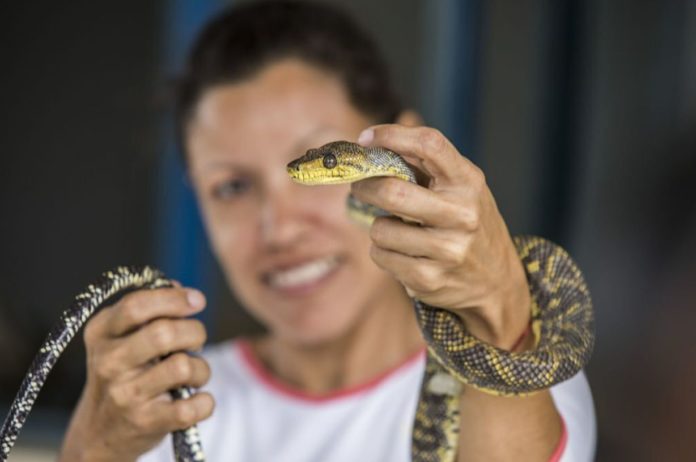Aussie researchers say that a simple blood test can tell if a snakebite was dry or full of venom. The test can tell the difference between envenomed and non-envenomed patients within 2 to 3 hours of the bite.
According to research published today in the Medical Journal of Australia, the increased availability of D-Dimer testing – a blood test that detects or monitors blood-clotting issues – may be a crucial aid in the early diagnosis of venom-induced consumption coagulopathy (VICC), the most common systemic effect of snakebite in Australia.
Data for suspected and confirmed instances of snakebite were collected prospectively by the Australian Snakebite Project from 2005-2019 and analyzed by Professor Geoffrey Isbister and colleagues from the University of Newcastle and Calvary Mater Newcastle.
Isbister and coworkers found that D-dimer values surpassed 2.5 mg/L from three hours after the bite for 95% of patients who developed VICC, whereas D-dimer values “were lower than 2.5 mg/L for 95% of non-envenomed patients up to six hours after the bite.”
“Diagnostic performance increased during the first three hours after snakebite; for quantitative D-dimer testing at 2–6 hours, the area under the receiver operating characteristic curve (AUC) was 0.99; with a cut-off of 2.5 mg/L, sensitivity was 97.1% and specificity 99.0% for VICC,” they said.
“For 36 patients with normal international normalised ratio (INR) and activated partial thromboplastin time (aPTT) values 2–6 hours after snakebite, the AUC was 0.97; with a cut-off of 1.4 mg/L, sensitivity was 94% and specificity 96%.”
D-dimer readings surpassed 4 mg/L within 24 hours of the bite in 84 patients, with the exception of one, who experienced acute kidney impairment associated to VICC.
According to Isbister and colleagues, “from 2–3 hours after snakebite, changes in D-dimer level clearly distinguished between non-envenomed patients and patients with VICC.”
In several individuals who later developed VICC, the D-dimer concentration was lower than 2.5 mg/L within the first two hours, suggesting that it should be reassessed later if the initial result is below this cut-off.
Their findings suggested that it might be clinically beneficial to have D-dimer testing available in smaller, rural institutions, where many patients with snakebite initially visit.
Despite its long history of usage, Isbister and coworkers admit that the diagnostic value of point-of-care D-dimer testing for VICC has never been determined.
“Point-of-care INR testing for diagnosing VICC after snakebite is not reliable, potentially making point-of-care D-dimer testing even more valuable,” they added.
D-dimer testing, however, will not be helpful for identifying envenoming without VICC, for example, after bites by death adders or black snakes (Pseudechis spp., including red-bellied black snakes) (Acanthophis spp.). In these situations, non-specific symptoms like nausea and headaches could be the sole early signs of envenomation, according to the study authors.
The researchers concluded by saying:
D-dimer levels can help diagnose systemic envenoming with VICC following snakebite.
“Assaying D-dimer as soon as possible but at least two hours after the bite, with a cut-off value of 2.5 mg/L,” according to them, “would provide high sensitivity and specificity, and allow sufficient time to administer antivenom within three hours of the snakebite.”
Image Credit: Getty
You were reading: This Simple Blood Test Detects Snakebite Was Dry Or Venomous
